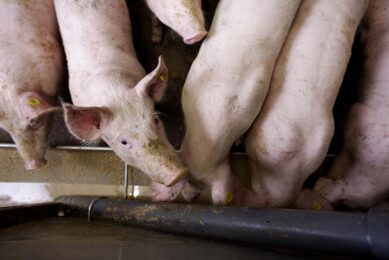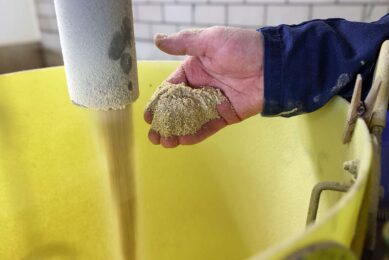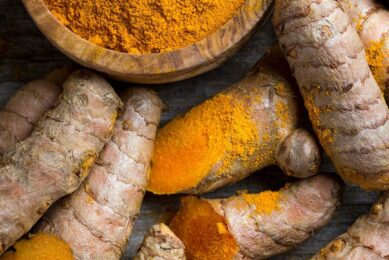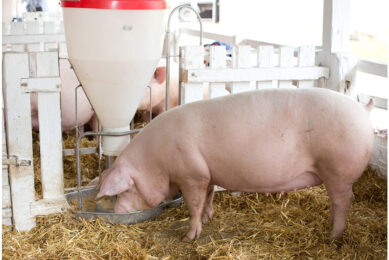Field pea can replace soybean meal diets for pigs
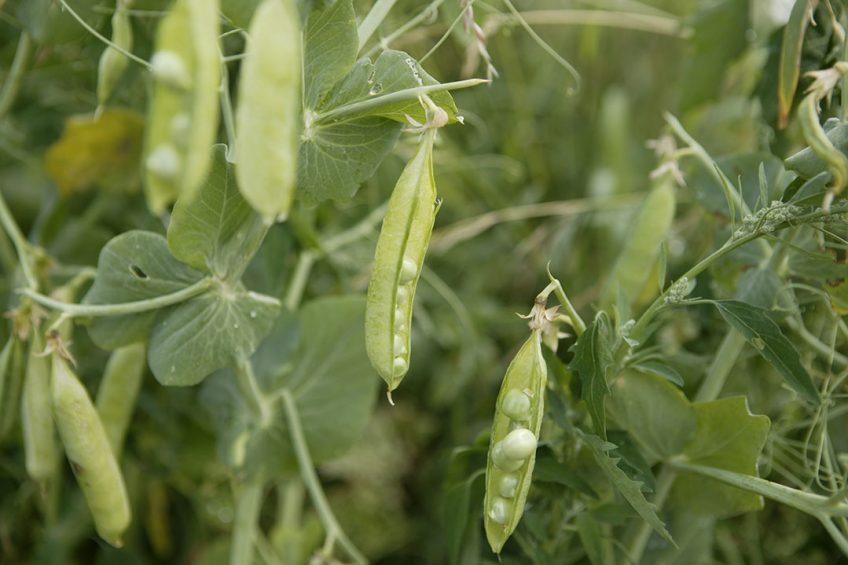
Field pea could be used as an alternative starch and protein source for swine. A recent study showed that weaned pigs fed 400 g field pea/kg diet instead of soybean meal could maintain growth performance.
Those were the main conclusions of a research carried out by Canadian researchers supported by feed additives manufacturer Evonik, Germany. The study was published in the peer-reviewed Journal of Animal Feed Science and Technology.
The research team processed field pea in different ways to explore the effect of processing. Field pea were ground using a 4.0 mm sieve, then they were:
- cold-pelleted (70-75°C);
- steam-pelleted (80-85°C);
- extruded (115°C);
- subsequently, the field pea was reground using a 3.2 mm sieve.
Trial with 236 pigs after weaning
The study used 236 pigs, weaned at 20 days of age. The animals were housed in 60 pens in 4 rooms and fed 1 of 5 diets starting 2 weeks post-weaning for 3 weeks. The 5 different diets included:
- 400g/kg raw field pea;
- 400g/kg cold-pelleted field pea;
- 400g/kg steam-pelleted field pea;
- 400g/kg extruded field pea;
- 300g soybean meal and 100 g wheat grain.
The diets were formulated to provide 10.0 MJ net energy (NE)/kg and 12.1 g standardised ileal digestible lysine/kg.
Results of feeding processed field pea
In field pea diets, when compared to soybean meal diets, the apparent total tract digestibility coefficient of gross energy and crude protein, digestible energy and predicted net energy value were lower. They were not affected by the processing of field pea.
Overall (day 1-21), the average daily feed intake of pigs fed raw or processed field pea diets (853-882 g/day) was larger than pigs fed a soybean meal diet (813 g/day). Larger average daily feed intake for field pea diets than soybean meal diet indicated that pigs compensated for the reduced energy value of field pea diets, the researchers wrote.
Average daily gain and feed efficiency
The average daily gain did not differ between soybean meal diet and field pea diets, nor did it differ among field pea treatments.The scientists found that feed efficiency was lower for pigs fed field pea diets (0.60-0.63) than for pigs fed soybean meal diet (0.68), but it did not differ among field pea treatments.

Pigs also thrive on protein from clover grass
Body weight of pigs fed field pea
The body weight of pigs fed raw, cold-pelleted, steam-pelleted, extruded field pea and soybean meal diets were 21.0, 21.1, 21.3, 21.4 and 21.7 kg respectively. The researchers concluded that final body weight was not affected by feeding or processing of field pea.
Included in late nursery diets
To conclude, the researchers wrote, “Weaned pigs fed 400 g field pea/kg diet in substitution of soybean meal could maintain growth performance. Larger average daily feed intake for field pea diets than soybean meal diets indicated that pigs compensated for the reduced energy value of field pea diets. Raw field pea can be included in late nursery diets without thermal treatment to replace 300 g soybean meal and 100 g wheat grain/kg diet.”
This study in the Journal of Animal Feed Science and Technology was authored by J. Hugman, L.F. Wang, E. Beltranena and R.T. Zijlstra, attached to the University of Alberta, Edmonton, AB, Canada; and J.K. Htoo, Evonik, Germany. E. Beltranena is also attached to Alberta Agriculture and Forestry.



